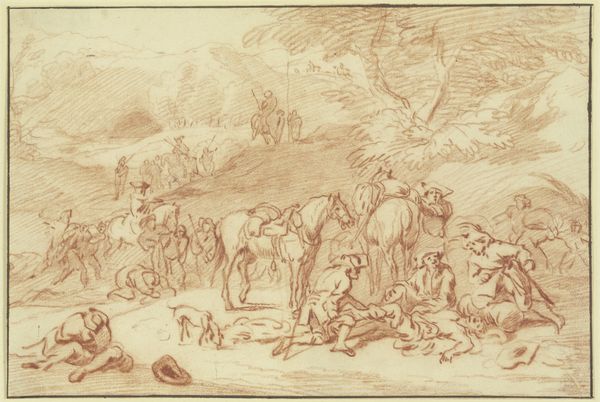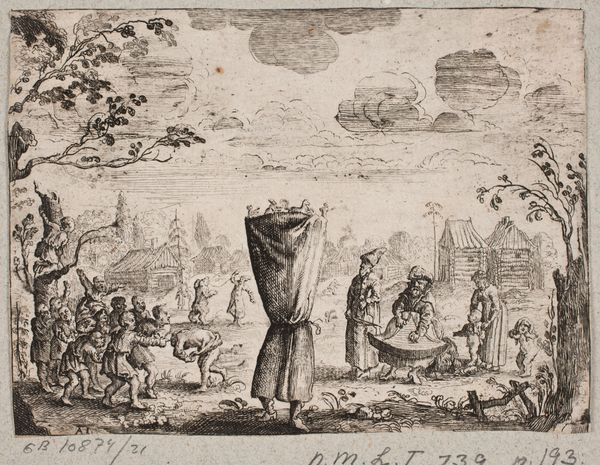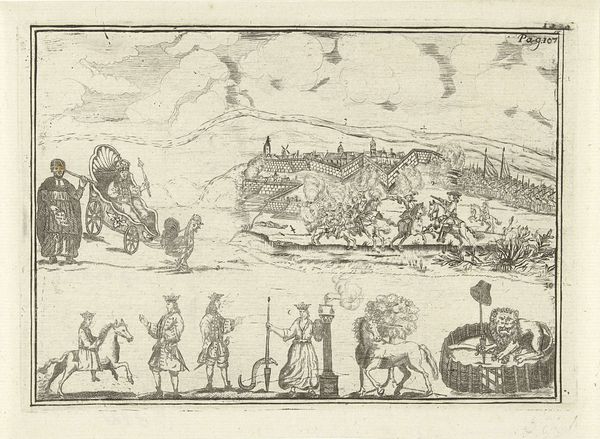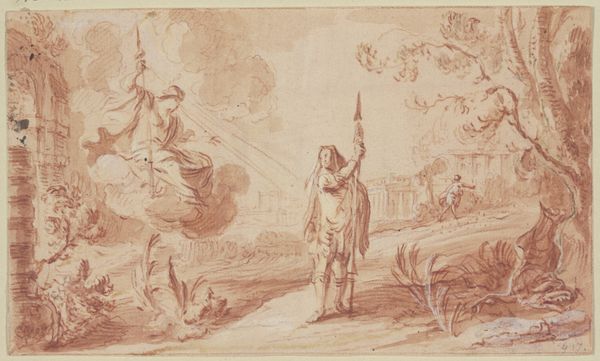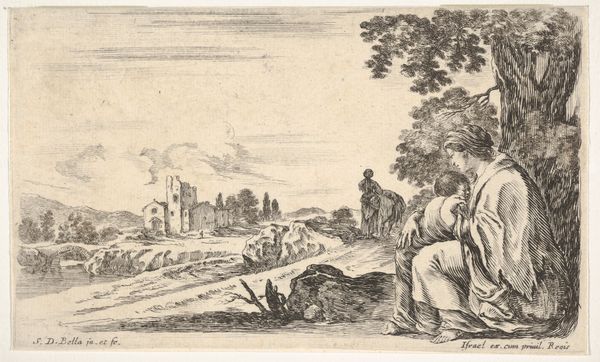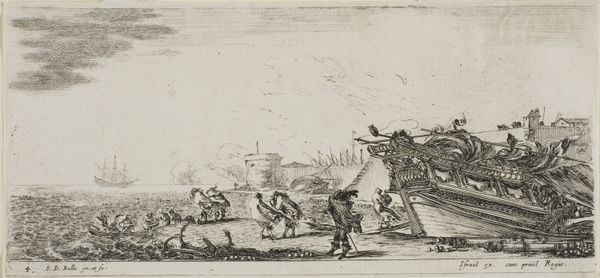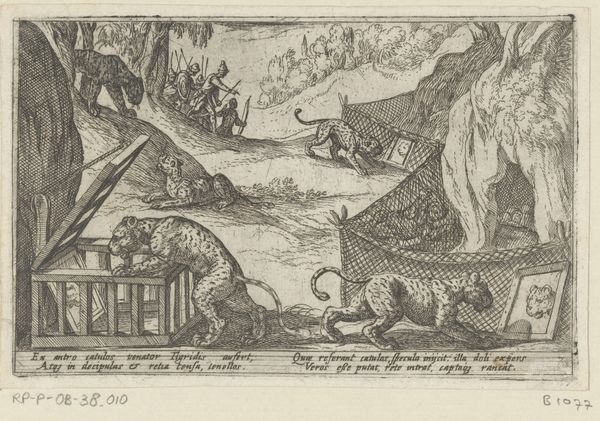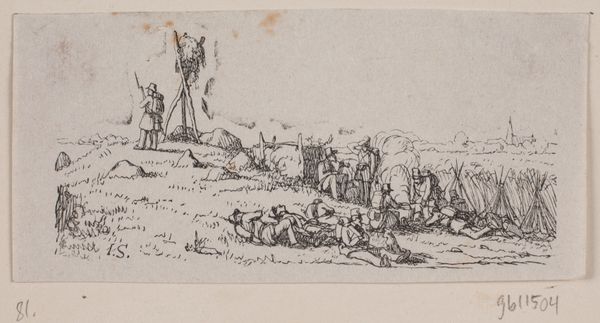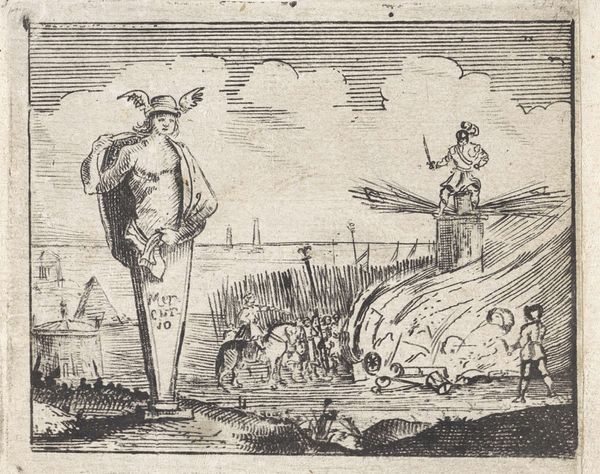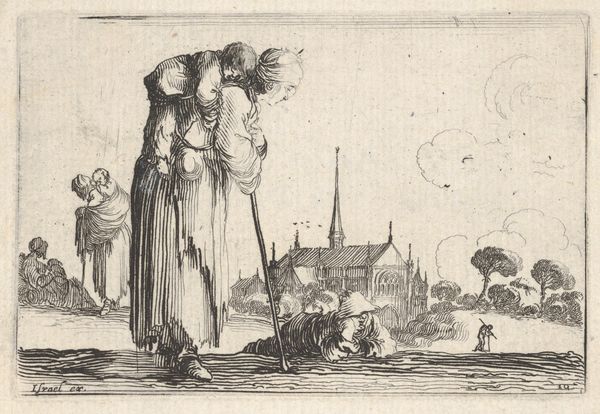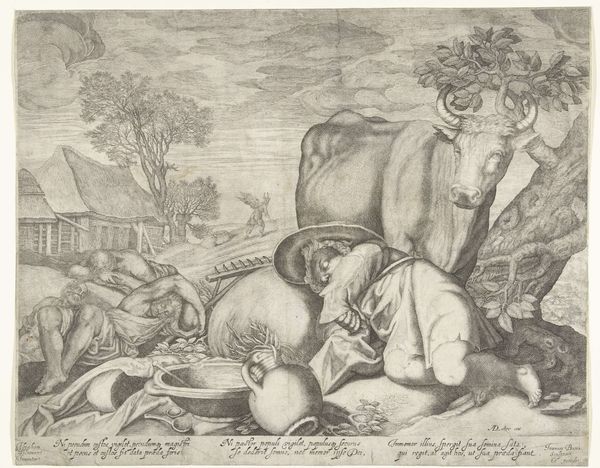
drawing, ink, pen
#
drawing
#
baroque
#
pen sketch
#
landscape
#
figuration
#
ink
#
pen
#
history-painting
Dimensions: height 210 mm, width 320 mm
Copyright: Rijks Museum: Open Domain
Editor: Here we have Nicolaes Maes' "Christus wekt de discipelen op de Olijfberg," created sometime between 1650 and 1660, rendered in ink. I’m struck by the dramatic use of light and shadow. What do you see in this piece? Curator: Beyond the striking Baroque style and clear religious iconography, this drawing offers a window into the social dynamics of the time. Note how the looming architecture of the town in the background, representing societal structures and potential sources of oppression, contrasts with the vulnerability of Christ and his disciples. Does the hurried line work suggest to you a sense of urgency or even precarity? Editor: Definitely. There's almost a frantic energy to it, and the disciples seem very human, not idealized at all. Curator: Exactly! Consider, too, the power dynamics at play. Christ's attempt to awaken his disciples, to rouse them to awareness, is taking place against this backdrop of impending betrayal and potential persecution. What kind of work do you think Maes, as the artist, might be alluding to here? Editor: That’s a good question! I guess the picture invites the viewer to be awake to what's happening in the world around them and not be asleep like the disciples? Curator: Precisely. This piece reminds us that even in moments of deep personal struggle, it's crucial to remain conscious of the social and political forces that shape our realities. Thanks to you, I see the city in the distance now as both a threat and a sanctuary. Editor: And I now appreciate the connection between the disciples' slumber and a wider social apathy, one that perhaps the artist wants to shake us out of.
Comments
No comments
Be the first to comment and join the conversation on the ultimate creative platform.


